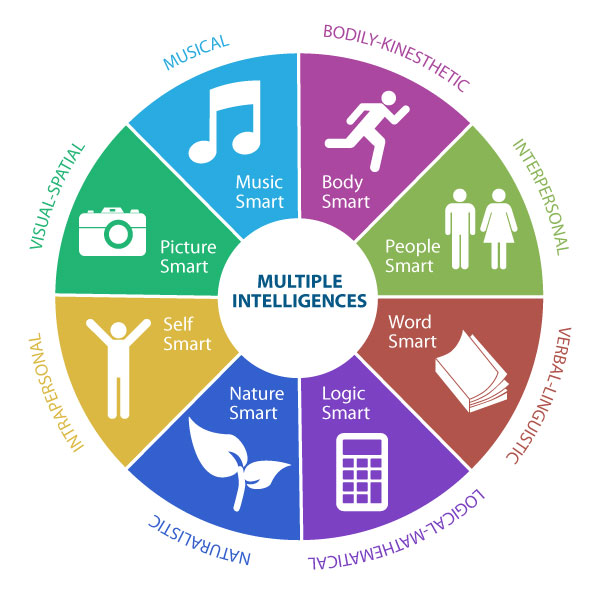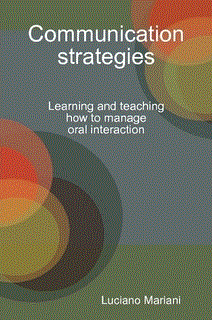Learning Paths

Learning to learn, teaching to learn - Strategies, motivations and attitudes for learner autonomy
luciano.mariani@iol.it
|
From my new bilingual website  Cinema and thinking styles: how movies can reveal aspects of personality 
Can
your movie preferences tell you something about your
personality? A discovery approach using the multiple intelligences model  Images of teachers in Hollywood cinema This new Dossier explores how Hollywood cinema has portrayed teachers, both in their professional and in their private life, on the one hand, by reflecting society's beliefs and attitudes, and on the other hand, by helping to spread images of teachers which are often stereotyped and seldom consistent with the real situation and the contradictions of schools. Although focussed on American schools, the Dossier presents a series of criteria useful for reflecting on and discussing any school system and its teachers. School at the movies: teaching and educational relationships
A productive teaching/learning process requires a
cooperative "class climate" as well as positive personal
relationships, used as the basis of effective teaching
strategies. Movies provide many examples of how teaching and
pedagogical choices can be interrelated. Teachers are at the
centre, not so much for their charisma (à
la
Professor Keating in
Dead poets' society) as for their
ability to use their communicative potential to foster
students' learning and growth in autonomy. We will explore this intriguing topic with the help o a wide range of movies, from Mona Lisa smile to The class, from The 400 blows to (obviously!) Dead poets’ society …
|
|
|||
 |
Exploring
Italian High School Students’
Metaphors of Language Learning
This paper reports the results of a survey carried out on the beliefs and attitudes held by Italian upper-secondary school students about foreign language learning. The survey used metaphors as a powerful tool to explore this hidden dimension of language learning. |
|||
 Language learning motivation: A multi-dimensional competence If we accept the idea that motivation is neither a natural gift nor the result of fortuitous circumstances, then we need to consider its multiple dimensions: the influence of interpersonal and sociocultural relationships, the impact of the learning tasks which are set in the classroom, and the dynamic interplay of personal values, beliefs and perceptions which shape the language learner’s identity. |
 Teacher support and Teacher Challenge in Promoting Learner Autonomy Promoting autonomy means helping students find their own personal balance between dependence (on such factors as the teacher and the textbook) and self-regulation. If we become more aware of the degree to which we support and challenge learners in our management of tasks and interaction, we can then better evaluate our teaching style, the activities we use, and our students' motivational profiles. |
|||
 The place of modular systems among Foreign Language Teaching materials This paper introduces the concept of "learning modules", i.e. elements that can be fitted together flexibly according to different teaching needs and situations. The "modular systems" thus obtained are described in terms of ther advantages and classified according to their specific function in implementing a language syllabus. |
 Language awareness strategies for intermediate students of English A new look at grammar rules: read texts, solve problems and discover the rule! (For intermediate students of English) |
|||
|
free
E-BOOKS |
||||
|
Intercultural communication strategies A brief introduction to communication strategies and their place in intercultural education Dowenload in pdf format |
 Communication strategies Learning and teaching how to manage oral interaction provides a sound theoretical and methodological basis for anexplicit, systematic approach to learner education on communication strategies Download in Word or pdf formats |
|||
 |
||||
| Intercultural
communication strategies for learner autonomy This paper argues for strategy education across the curriculum as a whole-person engagement, involving the activation of cognitive, affective and social factors, and as a descriptive, experiential and explicit pedagogical aproach. |
Developing strategic competence: towards autonomy in oral interaction Strategic competence - solving communication problems despite inadequate command of the linguistic/sociocultural code - is an important feature of both L1 and L2 interaction. Teaching approaches will have to ensure that students consider authentic situations where strategies play a significant role; become aware of strategies through observation and discussion; and face problem-oriented, open-ended interactive tasks which require strategy use to negotiate meanings and intentions. |
|||
 Learning strategies, teaching strategies and new curricular demands: a critical view New curricular demands, with their emphasis on competence and performance, prompt us to investigate the role that learning strategies can realistically play in the learning/teaching process, both from a cognitive and from an affective-motivational point of view. Learners should not just be "trained" to use strategies - rather, students and teachers should engage in a mutual effort to negotiate their own specific contribution to learning tasks. |
 The challenge of plurilingual education: Promoting transfer across the language curriculum A plurilingual curriculum is responsible for promoting the transfer of knowledge, beliefs/attitudes and skills across languages, so that learners can both profit from their previous L1 and L2 experiences in learning an L3, and, conversely, feedback their new L3 competence into their L1 and L2. |
|||
|
Learning styles across cultures Learning styles are as much affected by cultural factors as all other areas of individual differences. Such factors, while shaping individual identity, should not lead to undue generalization or even stereotypes. Within multicultural educational institutions, possible clashes between learning and teaching styles can only be dealt with through processes of awareness raising, mediation and negotiation. |
 Learning strategies: bridging the gap between competence and process Learning strategies have long been recognised as a key tool to empower students and promote learner autonomy. Recent debates on school reform, however, invite us to clarify the place that strategy instruction may have in a new curriculum, with special regard to the concept of “competence” and to the interaction between “process” and “product”. Powerpoint presentation in pdf file |
|||
